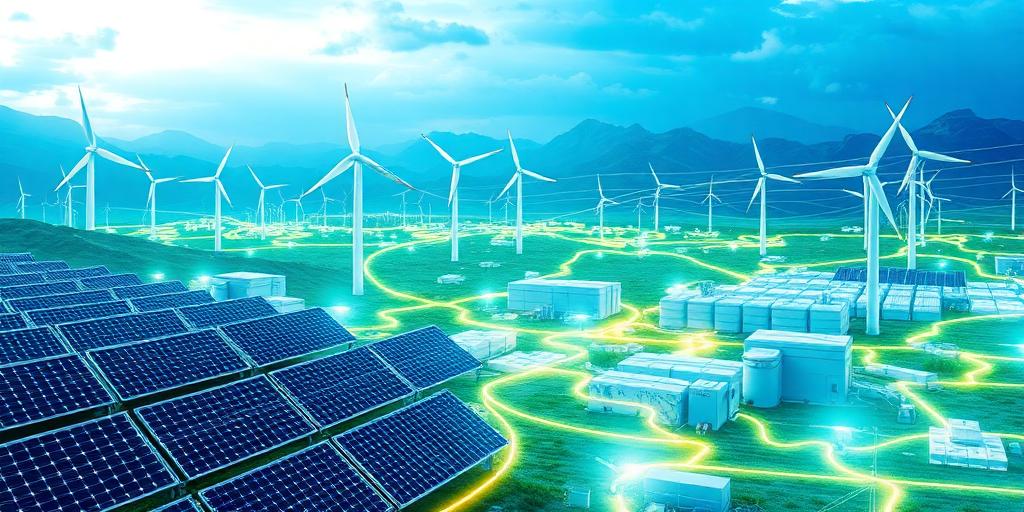The global energy landscape is undergoing a monumental transformation, driven by an imperative to mitigate climate change and secure sustainable power sources. While renewable energy technologies are already integral to our current infrastructure, the pace of innovation is accelerating, promising a future far more reliant on clean, abundant power. This article dissects the most compelling advancements defining the next generation of renewable energy.
Solar Power: Beyond the Photovoltaic Panel
Solar energy, long a cornerstone of the renewable portfolio, is witnessing a profound evolution. Traditional silicon-based photovoltaic (PV) panels are becoming more efficient and cost-effective, but true breakthroughs are emerging from novel materials and deployment methods.
- Perovskite Solar Cells: These next-generation materials offer high efficiencies, lower manufacturing costs, and flexibility, potentially enabling solar integration into windows, building facades, and even wearable electronics. Their tunability in absorbing different light spectra is a significant advantage.
- Bifacial and Transparent Panels: Bifacial panels capture sunlight from both sides, significantly boosting energy yield, particularly when deployed over reflective surfaces or at height. Transparent solar cells are paving the way for energy-generating windows, blurring the lines between infrastructure and energy production.
- Floating Solar (Floatovoltaics): Deploying solar arrays on water bodies reduces land use, minimizes evaporation, and can enhance panel efficiency due to cooling effects. This approach is gaining traction globally, especially in regions with high population density.
Wind Energy: Harnessing the Invisible Giant
Wind power continues its impressive scale-up, with innovations focusing on efficiency, footprint reduction, and offshore deployment.
- Offshore Wind Expansion: Far from land, offshore wind resources are stronger and more consistent. Innovations in floating foundations are unlocking deep-water sites previously inaccessible, vastly expanding the global potential for this clean energy source.
- Taller Turbines and Advanced Blades: Increasing turbine height allows access to stronger, less turbulent winds, while advanced aerodynamic blade designs maximize energy capture and reduce noise.
- Airborne Wind Energy Systems (AWES): Though still in nascent stages, AWES systems, which use kites or drones to harness high-altitude winds, offer the potential for generating power from a significantly smaller footprint and in a wider range of locations.
Energy Storage: The Grid's Crucial Enabler
The intermittency of solar and wind power necessitates robust energy storage solutions. This domain is perhaps the most critical for achieving a fully renewable grid.
- Advanced Battery Technologies: Beyond lithium-ion, research into solid-state batteries promises higher energy density and improved safety. Flow batteries, with their scalable design and long lifespan, are emerging as a strong contender for grid-scale storage, offering the ability to store large amounts of energy for extended periods.
- Green Hydrogen: Electrolysis powered by renewable energy can produce green hydrogen, a versatile energy carrier. It can be stored, transported, and used in fuel cells for electricity generation, industrial processes, or transportation, serving as a long-duration storage solution and a pathway to decarbonize hard-to-abate sectors.
- Grid-Scale Thermal Storage: Systems that store energy as heat in molten salts or other materials can provide dispatchable power for hours or days, making them highly effective for integrating renewable sources into the grid.
Emerging Horizons and System Integration
Beyond these established renewables, other technologies are poised to make significant contributions:
- Enhanced Geothermal Systems: Innovations are enabling the extraction of geothermal energy from a wider range of geological settings, not just traditional hydrothermal areas. This could unlock a continuous, baseload power source virtually anywhere.
- Small Modular Reactors (SMRs): While not strictly renewable, SMRs are being explored for their potential to provide reliable, low-carbon baseload power that can complement intermittent renewables and utilize advanced fuels.
- Smart Grids and AI Integration: The true power of these individual technologies is unlocked through intelligent grid management. AI and machine learning are optimizing energy distribution, predicting demand, managing load balancing, and integrating diverse renewable sources seamlessly, ensuring grid stability and efficiency.
The Path Forward
The trajectory of renewable energy innovation is clear: towards higher efficiency, lower costs, and greater versatility. While challenges remain—including infrastructure upgrades, supply chain resilience, and policy frameworks—the rapid advancements in solar, wind, storage, and other nascent technologies provide a compelling vision for a sustainable, decarbonized energy future. Investing in research and development, alongside supportive policy, will be paramount in realizing the full potential of these transformative innovations, ensuring energy security and environmental stewardship for generations to come.









